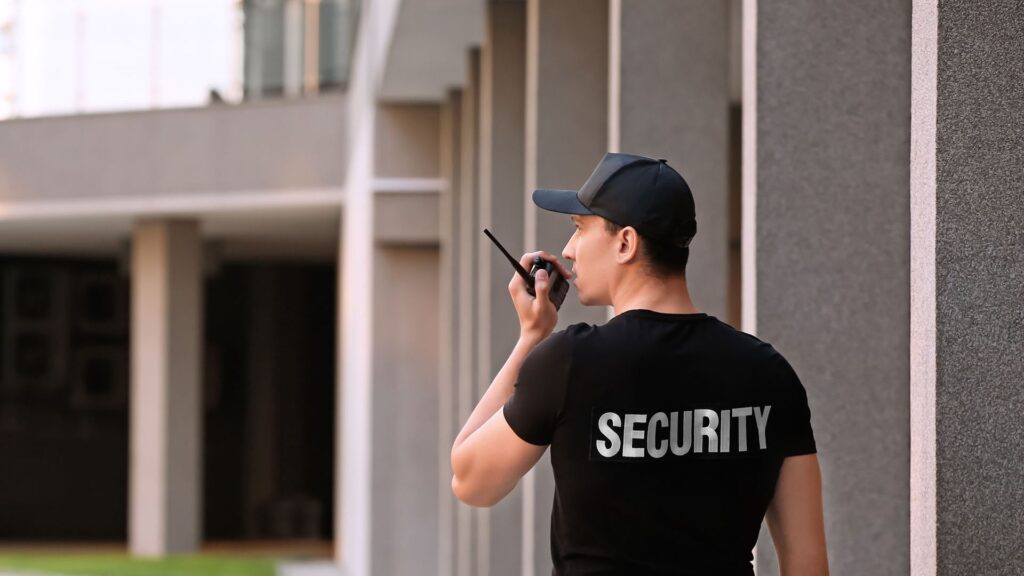Security Guards
Security Guards for Facility Protection
Introduction to Security Guards
Security Guards are an integral part of protecting facilities and ensuring their safety. Comprehensive protection strategies involve advanced technology and human guards to minimize risks and enhance overall security. By assessing risks and providing appropriate security services, managers can bolster their facility’s reputation and increase client confidence. Amid growing challenges, investing in security guards has become a strategic necessity for ensuring sustainability and effective growth.
Importance of Security Guards in Facility Protection
Introduction to Security Guards
Security guards are essential for ensuring the safety of facilities and protecting them from potential risks. They are defined as a set of measures and strategies aimed at safeguarding individuals, property, and sensitive information within facilities. Security guards play a pivotal role in organizations by not only providing physical security but also enhancing preventive measures to reduce the likelihood of incidents or crimes.
Security guards are critical in protecting facilities from internal and external threats. They go beyond mere physical presence by incorporating advanced technology like surveillance cameras, alarm systems, and access control devices. These systems detect suspicious activities and provide real-time reports, enabling timely actions to strengthen overall security.
Additionally, security guards are a core component of risk management strategies within facilities. Their preparedness allows organizations and businesses to safeguard valuable resources, whether physical or human. Furthermore, a robust security system builds client and investor confidence, positively impacting the company’s market reputation. In an ever-changing business environment with increasing threats, investing in security guards is a strategic necessity for institutions to thrive securely and grow.
Types of Security Guards
Security guard services come in various forms to protect facilities and provide a safe environment for individuals and assets. These include human guards, such as security personnel and emergency teams. They monitor activities and individuals inside and outside the facility, helping identify unusual behavior or potential threats. Human guards excel at rapid emergency response, offering reassurance to employees and visitors.
On the other hand, technology plays a significant role in enhancing security. It includes surveillance systems like CCTV cameras and alarm systems. Surveillance cameras effectively monitor daily activities and gather evidence in case of incidents. Alarm systems provide immediate alerts for threats such as intrusions or fires. These systems serve not only as reactive tools but also as preventive measures by deterring undesirable elements.
Integrating human guards with security technologies ensures maximum protection. For instance, security personnel can monitor cameras and interact with electronic systems for improved efficiency, creating a safe and well-organized environment. By employing diverse security measures, organizations can strengthen their ability to counter threats and protect their facilities comprehensively. Thus, both human and technological security are foundational pillars of an effective security system.
Benefits of Security Guards
Security guards are vital for any facility striving to maintain its safety and security. Among the primary benefits of providing security services is risk reduction. With well-trained and equipped personnel, potential threats can be identified and addressed quickly, positively impacting the facility’s overall safety. This effective risk management enhances the sense of security for individuals within the premises.
Moreover, security guards significantly improve general safety. When visitors and employees feel secure, it boosts their productivity and satisfaction. A visible security presence ensures immediate handling of unexpected incidents, such as thefts or assaults, which is crucial for maintaining a safe work environment.
Beyond safety, security guards positively influence a facility’s reputation. In the commercial world, reputation is crucial for attracting clients and investors. Effective security services reflect a facility’s commitment to safety, increasing public trust and enhancing its image in the community. This positive image benefits all aspects of business operations.
Finally, security services reduce costs associated with accidents and security risks. Instead of incurring expenses due to incidents, facilities can focus on core operations. Thus, security guard services are a strategic investment that supports the facility’s growth and helps achieve its objectives.
Risk Assessment and Its Importance
Risk assessment is a fundamental step in facility protection strategies, helping identify potential threats and risks that may affect safety and security. This assessment involves a thorough analysis of the facility’s surrounding environment and internal activities, aiding in pinpointing vulnerabilities and existing gaps.
Risk assessment methods include qualitative and quantitative analyses. Qualitative approaches rely on expertise and knowledge to evaluate risks, while quantitative methods use statistical data and mathematical models to precisely determine risk levels. Tools such as checklists and field surveys provide accurate data, helping define necessary security requirements.
Comprehensive risk assessments prioritize threats based on severity and likelihood. High-risk scenarios that could cause significant harm to the facility or its occupants require focused attention. Risk assessments also guide security investments to ensure they effectively address identified needs.
Understanding workplace risks improves management’s ability to make strategic decisions to enhance security plans. Thus, risk assessment is a vital tool for creating a safe and reliable environment. With increasing security challenges, regular application and review of this process ensure alignment with evolving conditions and workplace changes.
For the full translation or additional sections, let me know!



